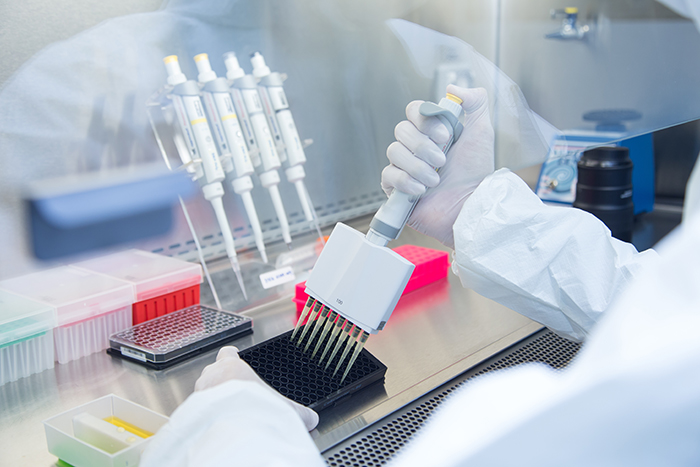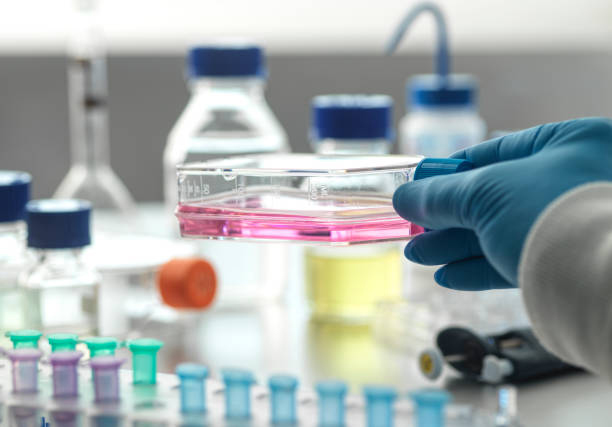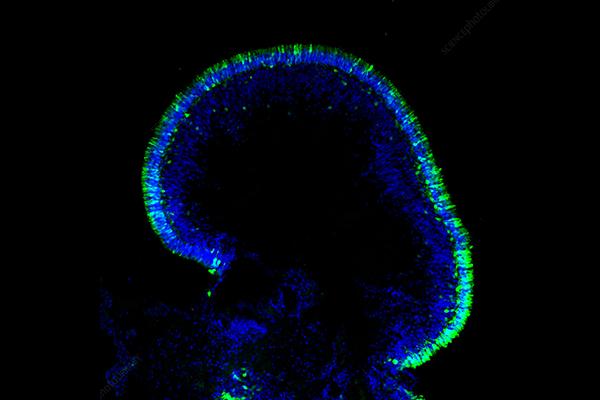Introduction: The Evolving Landscape of Cell Culture
Cell culture remains a critical tool in biological research because it enables scientists to investigate cell function while developing therapeutic approaches and advancing tissue engineering. Cells were conventionally grown using two-dimensional (2D) systems which consisted of flat rigid surfaces that provided cost-effective and easy-to-manage solutions. Although 2D cultures enabled many research findings they could not represent the intricacies of living organisms' three-dimensional microenvironments. The shortcoming of two-dimensional systems disturbed cell behavior and morphology while altering gene expression and cell-extracellular matrix interactions which questioned the reliability of 2D models for drug development purposes. The development of 3D cell culture systems responded to the need for more physiologically relevant environments which allow cells to interact in three dimensions similar to living organisms. Current biological research and preclinical studies now rely heavily on 3D cultures because they provide improved accuracy. Creative Biolabs will examine both 2D and 3D systems in terms of their mechanisms and advantages while noting their limitations and applications and showcasing current innovations and trends that drive the evolution of cell culture technology.
 Figure 1. Comparison of the main features of 2D and 3D culture systems. 1,3
Figure 1. Comparison of the main features of 2D and 3D culture systems. 1,3
Decoding the Dimensions: Fundamental Differences Between 2D and 3D Cell Culture
Methodologies Unveiled:
-
2D Cell Culture: This tried-and-true method involves growing cells as a single layer attached to a flat, often specially treated plastic surface in a dish or plate. These surfaces might be coated with ECM proteins like collagen or fibronectin to help cells stick and spread. This makes it easy to see the cells under a microscope and to perform tasks like changing the cell food (media). The simplicity of 2D culture has made it a go-to for high-throughput screening, where researchers need to test many samples quickly and affordably.
-
3D Cell Culture: Unlike 2D, 3D cell culture lets cells grow and interact in all three dimensions, creating a more lifelike environment. There are two main types: scaffold-based and scaffold-free.
-
Scaffold-based methods use a supporting material (scaffold) that gives cells a 3D structure to attach to, grow on, and organize within. Hydrogels are common scaffolds, made of water-filled polymer networks that can mimic the ECM. These can be natural, like collagen or laminin, or synthetic, like polyethylene glycol (PEG), offering different levels of control over their properties. Solid scaffolds, often made of porous polymers like polystyrene, also provide a 3D space for cells to grow.
-
Scaffold-free methods rely on cells' natural ability to clump together into 3D structures without needing a scaffold. Spheroids, which are ball-like clusters of cells, are a prime example. They can be formed by growing cells in special plates that prevent them from sticking, using the hanging drop method where cells gather at the bottom of a droplet, or in bioreactors that control the environment for spheroid formation. Organoids are another exciting development. These are complex, self-organizing structures made from stem cells that can mimic the architecture and some functions of specific organs, providing powerful tools for studying development and disease.
-
More advanced 3D systems include microfluidic-based platforms called organ-on-a-chip devices. These combine 3D cell culture with tiny channels, allowing for precise control over the cell's surroundings, including fluid flow and nutrient levels, to better mimic how organs work in the body.
 Figure 2. Comparison among the different 3D-culture techniques. 1,3
Figure 2. Comparison among the different 3D-culture techniques. 1,3
Comparison of the Advantages of 2D and 3D Cell Culture
|
Feature
|
2D Cell Culture
|
3D Cell Culture
|
|
Cost
|
Lower
|
Higher
|
|
Complexity
|
Simpler
|
More complex
|
|
Growth Rate
|
Faster
|
Slower
|
|
Analysis
|
Easy to set up and analyze
|
Challenging due to thickness
|
|
Throughput
|
High
|
Generally lower
|
|
Established Use
|
Well-established
|
Still evolving
|
|
In Vivo Relevance
|
Limited
|
More closely mimics in vivo
|
|
Cell Morphology & Function
|
Unnatural planar shape, altered function
|
More natural morphology, improved function
|
|
Gene & Protein Expression
|
Altered compared to in vivo
|
More representative of in vivo
|
|
Drug Response Prediction
|
Less accurate
|
Better prediction
|
Limitations Examined of 2D and 3D Cell Culture:
|
Feature
|
2D Cell Culture
|
3D Cell Culture
|
|
Structural Mimicry
|
Poor
|
Can be challenging to control
|
|
Microenvironment
|
Lacks in vivo cues
|
Harder to precisely control
|
|
Cell Shape
|
Unnatural planar shape
|
Can still be altered
|
|
Nutrient Access
|
Uniform and unrestricted
|
Can have diffusion limitations
|
|
Gene Expression
|
Can be significantly altered
|
Can still be influenced by method
|
|
Predictive Power
|
Often inaccurate
|
Can vary depending on the model
|
|
Waste Removal
|
Can accumulate rapidly
|
Can be challenging
|
|
Standardization
|
Well-established protocols
|
Lack of standardization in some areas
|
Applications of 2D and 3D Cell Culture Systems in Biomedical Research
Applications of 2D Cell Culture Systems
Drug Discovery and Development
-
High-throughput screening (HTS): Enables rapid testing of compound libraries due to simplicity and scalability.
-
Cytotoxicity assays: Widely used for evaluating drug efficacy (e.g., MTT, SRB assays).
-
Pharmacokinetic profiling: Simplified models for studying drug absorption and metabolism.
Basic Cell Biology Research
-
Cell morphology and adhesion studies: Monolayer growth allows precise observation of cellular structures.
-
Gene expression and signaling pathways: Homogeneous nutrient distribution supports controlled experiments.
Cancer Research
-
Proliferation and apoptosis assays: Immortalized cancer cell lines (e.g., HeLa) for chemotherapeutic screening.
-
Simplified tumor models: Study basic mechanisms of oncogenesis and drug resistance.
Cost-Effective and Accessible Platforms
-
Low resource requirements: Ideal for small laboratories with limited funding.
-
Standardized protocols: Extensive availability of characterized cell lines (e.g., ATCC repository).
Vaccine and Biotherapeutic Production
-
Monoclonal antibody production: Scalable platforms for industrial applications.
-
Viral vaccine development: Adherent cell lines for viral vector propagation
Applications of 3D Cell Culture Systems
Tissue Engineering and Regenerative Medicine
-
Biomimetic scaffolds: Fabrication of bone, cartilage, and skin substitutes using hydrogels or synthetic polymers.
-
Organ transplantation: Bioreactor-cultured tissues for functional repair.
Advanced Disease Modeling
-
Tumor microenvironments: Patient-derived organoids to mimic cancer heterogeneity and drug resistance.
-
Neurodegenerative diseases: 3D brain organoids for studying ALS and Alzheimer's pathology.
Drug Screening and Toxicity Testing
-
Gradient-based drug penetration: Spheroids and organoids replicate nutrient/oxygen gradients in solid tumors.
-
Reduced false positives/negatives: Improved prediction of in vivo drug responses compared to 2D models.
Cancer Biology and Metastasis Studies
-
Invasion and angiogenesis: ECM-rich models to study tumor-stromal interactions.
-
Immune cell co-cultures: Investigate T-cell infiltration and checkpoint inhibitor efficacy.
Stem Cell Differentiation and Organoid Development
-
iPSC differentiation: Enhanced generation of hepatocytes, neurons, and renal cells in 3D matrices.
-
Self-organization: Intestinal, cerebral, and mammary organoids for developmental studies.
3D Bioprinting and Customized Implants
-
Vascularized tissue fabrication: Layer-by-layer printing for transplantable organs.
-
Patient-specific implants: Reduced immune rejection using autologous cells.
Frontiers in Cell Culture: Latest Advancements and Emerging Trends
The development of 2D cell culture systems progresses with advanced surface treatments and media enhancements while microfluidic integration enables better cell behavior research and co-culture studies in cost-effective high-throughput environments. Scaffold-free 3D culture techniques including organoids and spheroids offer improved native tissue simulation which enhances disease modeling and drug testing capabilities. Using natural materials and synthetic polymers for scaffold design combined with 3D bioprinting provides precise control over structures. By combining microfluidics with 3D culture technologies researchers have developed organ-on-a-chip systems that replicate organ functions and allow for real-time analysis. Advanced imaging methods together with tissue clearing technology enable better visualization of intricate three-dimensional structures. The scientific community is currently working to standardize protocols to enhance reproducibility and usability in laboratories worldwide. Patient-derived organoids are becoming increasingly popular in personalized medicine because they allow for customized treatment approaches. The combination of these technological improvements is establishing a new direction for in vitro modeling applications in scientific research and therapeutic development.
 Figure 3. A novel 3D dynamic cell culture method.2,3
Figure 3. A novel 3D dynamic cell culture method.2,3
Conclusion: The Future of Cell Culture Systems
For many years 2D cell culture has remained fundamental to biological research because it offers straightforward procedures and cost-effectiveness along with capabilities for high-throughput experimentation. Because 2D cell cultures fail to accurately mimic in vivo conditions researchers have turned to 3D cell culture systems that enable cells to interact naturally while enhancing gene expression and improving drug efficacy predictions. 2D systems continue to be fundamental for basic research and initial tests while 3D models find growing application in complex research areas including cancer biology and tissue engineering. Both systems function as complementary tools and bring different strengths to scientific research. Current technological developments improve 2D systems through innovations in surface coatings and microfluidics while 3D culture fosters rapid progression through scaffold innovations and organ-on-a-chip technologies and organoid development. The future of cell biology depends on the integration of 2D and 3D systems to build predictive models with physiological relevance that will advance biomedical research and therapeutic development.
Creative Biolabs: Your Partner in Advanced 3D Biology
Creative Biolabs is a leader in the field of 3D biology, offering a wide array of innovative products and services to support researchers in their quest for scientific breakthroughs. Recognizing the growing need for physiologically relevant cell culture models, Creative Biolabs provides advanced 3D cell culture solutions tailored to address the challenges discussed.
Spheroid Models
Organoid Models
3D Culture Products & Cell Resources
Discover how Creative Biolabs' customizable 3D models and cell products can propel your research forward and open new avenues in drug discovery. Get in touch with us today to explore tailored solutions for your specific needs!
Frequently Asked Questions (FAQs)
-
When might 2D cell culture be preferred over 3D cell culture?
2D cell culture is often preferred for its simplicity, lower cost, and ease of handling, making it suitable for high-throughput screening, basic cell biology studies, and initial toxicity assessments. Its well-established protocols and compatibility with standard laboratory equipment also make it a convenient choice for many applications.
-
What are the different types of 3D cell culture methods available?
There are two main categories of 3D cell culture: scaffold-based and scaffold-free. Scaffold-based methods utilize a supporting matrix like hydrogels or solid scaffolds to provide a 3D framework for cell growth. Scaffold-free methods, such as spheroid and organoid cultures, rely on the cells' ability to self-assemble into 3D structures. Microfluidic-based systems like organ-on-a-chip devices represent another advanced approach.
-
How does 3D cell culture better predict drug responses compared to 2D cell culture?
3D cell cultures more accurately mimic the complex in vivo environment, including cell-cell and cell-matrix interactions, nutrient and oxygen gradients, and tissue architecture. This leads to more physiologically relevant cellular behaviors and gene expression profiles, resulting in a better prediction of how drugs will behave in the human body compared to the simplified 2D models where cells have uniform access to nutrients and lack these complex interactions.
Research Model
Related Sections:

 Figure 1. Comparison of the main features of 2D and 3D culture systems. 1,3
Figure 1. Comparison of the main features of 2D and 3D culture systems. 1,3
 Figure 2. Comparison among the different 3D-culture techniques. 1,3
Figure 2. Comparison among the different 3D-culture techniques. 1,3
 Figure 3. A novel 3D dynamic cell culture method.2,3
Figure 3. A novel 3D dynamic cell culture method.2,3




